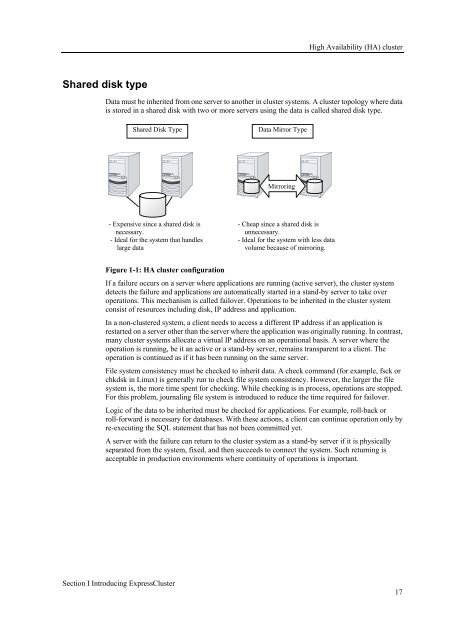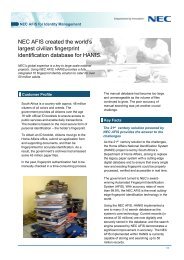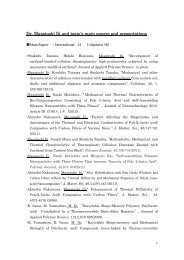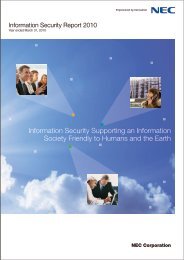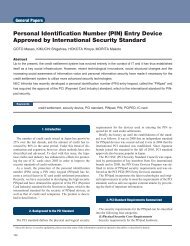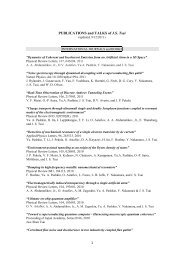ExpressCluster X 3.1 for Linux Getting Started Guide - Nec
ExpressCluster X 3.1 for Linux Getting Started Guide - Nec
ExpressCluster X 3.1 for Linux Getting Started Guide - Nec
Create successful ePaper yourself
Turn your PDF publications into a flip-book with our unique Google optimized e-Paper software.
High Availability (HA) clusterShared disk typeData must be inherited from one server to another in cluster systems. A cluster topology where datais stored in a shared disk with two or more servers using the data is called shared disk type.Shared Disk TypeData Mirror TypeMirroring- Expensive since a shared disk isnecessary.- Ideal <strong>for</strong> the system that handleslarge data- Cheap since a shared disk isunnecessary.- Ideal <strong>for</strong> the system with less datavolume because of mirroring.Figure 1-1: HA cluster configurationIf a failure occurs on a server where applications are running (active server), the cluster systemdetects the failure and applications are automatically started in a stand-by server to take overoperations. This mechanism is called failover. Operations to be inherited in the cluster systemconsist of resources including disk, IP address and application.In a non-clustered system, a client needs to access a different IP address if an application isrestarted on a server other than the server where the application was originally running. In contrast,many cluster systems allocate a virtual IP address on an operational basis. A server where theoperation is running, be it an active or a stand-by server, remains transparent to a client. Theoperation is continued as if it has been running on the same server.File system consistency must be checked to inherit data. A check command (<strong>for</strong> example, fsck orchkdsk in <strong>Linux</strong>) is generally run to check file system consistency. However, the larger the filesystem is, the more time spent <strong>for</strong> checking. While checking is in process, operations are stopped.For this problem, journaling file system is introduced to reduce the time required <strong>for</strong> failover.Logic of the data to be inherited must be checked <strong>for</strong> applications. For example, roll-back orroll-<strong>for</strong>ward is necessary <strong>for</strong> databases. With these actions, a client can continue operation only byre-executing the SQL statement that has not been committed yet.A server with the failure can return to the cluster system as a stand-by server if it is physicallyseparated from the system, fixed, and then succeeds to connect the system. Such returning isacceptable in production environments where continuity of operations is important.Section I Introducing <strong>ExpressCluster</strong>17


